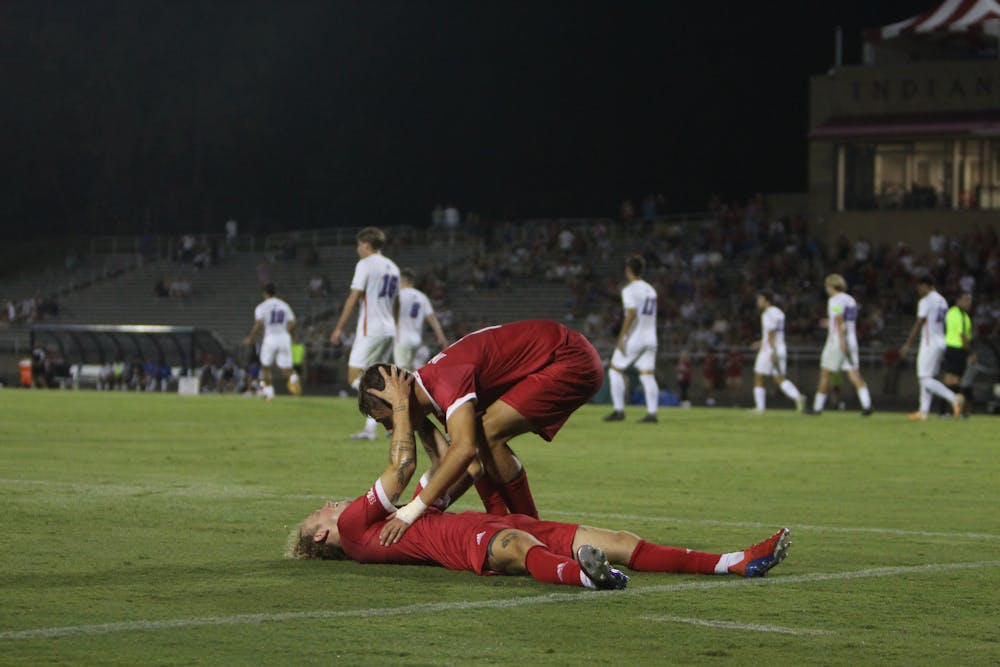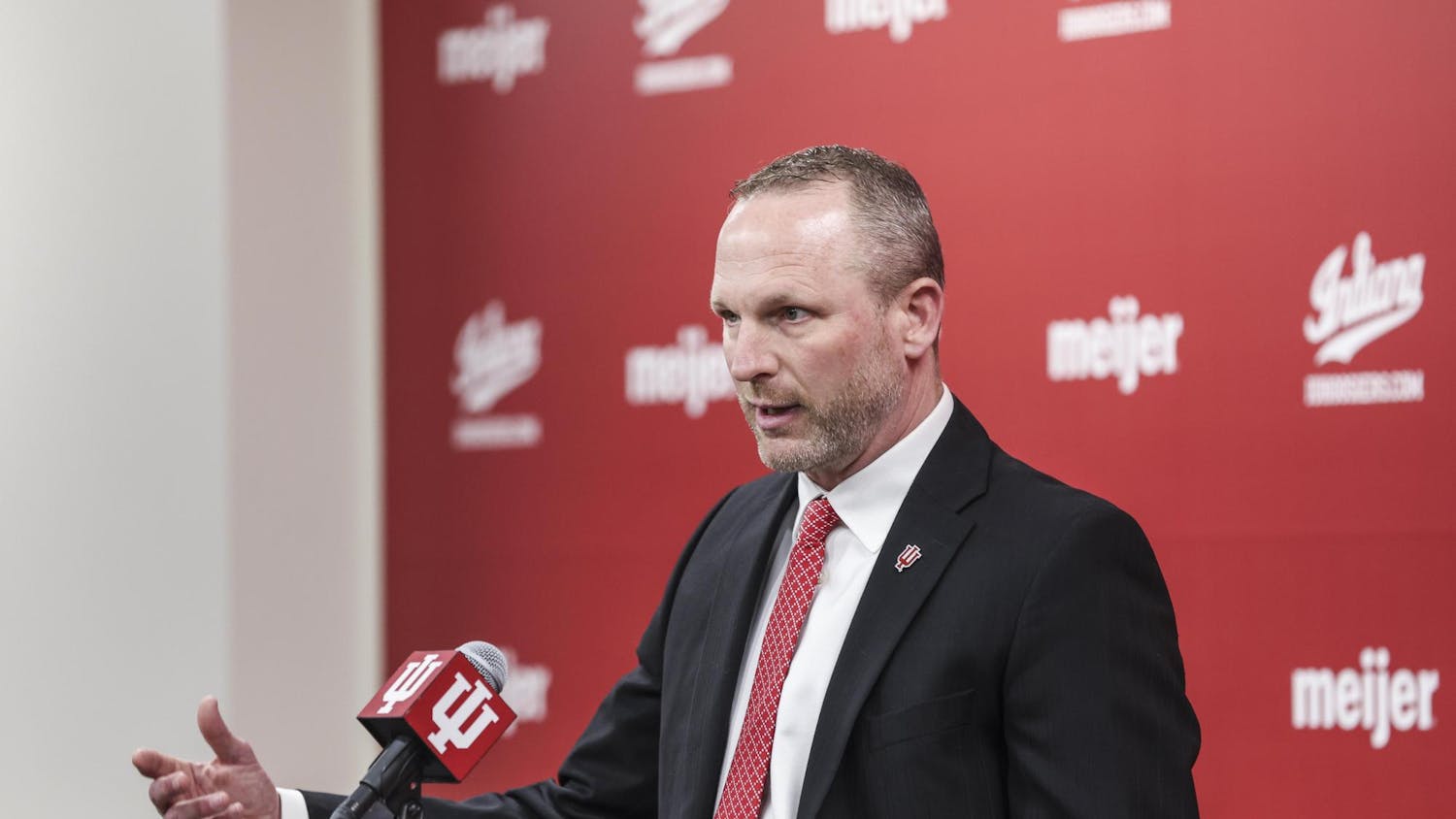To be great is to resurge from the ashes. In 2022, Indiana men’s soccer reached its 17th College Cup final but was defeated by Syracuse University 7-6 on penalties. The Hoosiers have made it to the final in back-to-back years three times in their history – 1982 and 1983, 1998 and 1999, and 2003 and 2004 – can they reach the final once again this year?
From the team that started against Syracuse, Indiana still has captain senior goalkeeper JT Harms, senior defenders Brett Bebej and Joey Maher, sophomore midfielder Jack Wagoner, junior midfielder Patrick McDonald, junior forward Samuel Sarver and senior forward Maouloune Goumballe. That means that the Hoosiers have an experienced team that knows what it takes to win big games and how to handle the pressure.
With weathered players on the roster, coach Todd Yeagley can introduce new players that can learn to be calmer and not lose their identity in unfavorable scenarios. Indiana had two freshmen starting against Notre Dame on Aug. 24 – forwards Collins Oduro and Alex Barger – who played well and showed attitude.
Both Oduro and Barger showed speed and initiative against Notre Dame, often looking for vertical plays and carrying the ball forward. The two freshmen rose to the occasion, were not afraid of having the ball and often attacked the free space to receive the ball.
Indiana also counts with the addition of senior defender Hugo Bacharach, who was named first-team All-Northeast Conference for three straight seasons at Fairleigh Dickinson University. The Spanish defender debuted against Notre Dame and showed calmness and good vision when he possessed the ball but, most importantly, he won most of his one-on-one matchups.
In 2022, Indiana shut out opponents in nine of 25 games, including playoffs. The addition of a big presence in the back line can improve the Hoosiers’ defensive performance and that paired with the speed and lethality of the new freshmen creates a hard team to beat.
Another positive sign of future success is Indiana’s schedule for the season. Besides the annual Big Ten matchups, the Hoosiers have played Notre Dame and DePaul University and will play Butler University, University of Kentucky, University of Evansville and Trine University again this year. The familiarity with their opponents can give them a slight edge.
It is also important to point out that the Hoosiers did not start well last season but, after the midway point of the regular season, they won 10, tied three and lost three games – against Kentucky in the regular season, Rutgers in the Big Ten Tournament and Syracuse in the College Cup final. This year they have a faster and safer team, and all of that combined with the core group of last year’s great run, so they should be more consistent throughout the season.
At home, Indiana won nine games, tied three and lost only one – against Kentucky – and this year the cream and crimson play 10 out of 17 regular-season games at home. The Hoosiers will count on their fans and familiarity with the field to make a difference. Players can use references not only from the field but also from its surroundings to have better spatial awareness, position themselves and calculate long passes, which helps in building up plays.
With a team that has the chemistry between them, a couple of offensive-minded freshmen and the majority of games being played in Bloomington, Indiana has the potential to not oscillate as much and find their identity earlier on in the season.
Fearless new blood mixed with experienced leadership is often the recipe for success.
The Hoosiers are ranked No. 2 in the country with merit, so it is okay to feel excited and positive about their future. But besides the hard numbers, Indiana passes the ‘eye test' for those who watch on TV or from the stands.
So, don’t be afraid to jump on this train called Indiana men’s soccer because, once it leaves the station toward the championship, it won’t look back.




